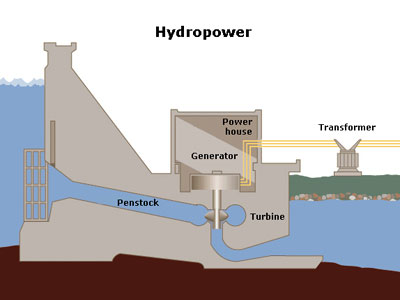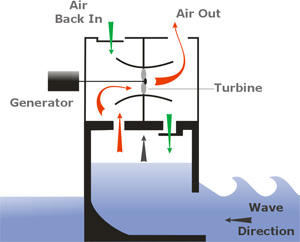Hydroenergy
HydropowerThe flow of water is the oldest renewable energy source in use. Its exploitation goes a few centuries back. Currently, it is the only renewable energy source in the group of conventional energy sources. However, this applies only to large facilities while so-called small hydropower plants are still in the need of support as well as other renewable energy sources. Hydropower plant construction depends on a number of requirements, such as the available hydropotential, altitude difference between a construction site, a place where actual water utilization is taking place, etc. Hydropower plants today have installed capacity widely ranging from a few kW (small hydro) to almost 20 GW. They are used as storage plants which can supply power system during peak load and as run-of-river plants with constant generation which covers a part of power system baseload.

Hydropotential exploitation for the purpose of electricity generation is currently in wide use throughout the world. Norway and Paraguay, for example, base almost all of their electricity production on hydropower. Although hydropower plants have numerous advantages, like other renewable energy sources, their detrimental influence on the subterrain water flows as well as flora and fauna is possible.
Tidal EnergyTide is the result of the Sun and the Moon gravity forces. The difference in the sea level reaches more than 10 m which can be used as an energy potential. Exploitation of tidal energy is similar to traditional exploitation of waterflow energy. The water energy rotates two-way turbines which produce electricity. The most famous tidal power plant is located in France, at the mouth of the Rance river. It was built during 1960s and it is still running. There are very few locations worldwide which meet necessary requirements in order for tidal energy to be exploited. Insufficiently developed technology as well as high construction and maintenance costs are reasons for rare implementation of this technology.
Wave Energy
Permanent ocean winds create the wavy ocean surface which can be used for wave energy exploitation. Its cost-effectiveness is questionable for several reasons. The cheapest location for constructing such facilities would be along the coast, but the waves are less powerful there. Constructing facilities offshore increases costs significantly. There is also a problem of electricity transmission and facility maintenance.

During 1970s and 1980s many government- or industry- sponsored studies were conducted with modest results of mere prototypes or demonstration devices. However, the world's first wave power plant, the Okeanós, is being installed in Portugal, in the vicinity of Póvoa de Varzim. In the first phase, scheduled for the year 2006, three machines (in total 2.25 MW) should be installed. In 2008, it is expected that the Okeanós will be expanded and consist of 28 machines (in total 24 MW), and that 10% of energy produced, will be assigned to the city.